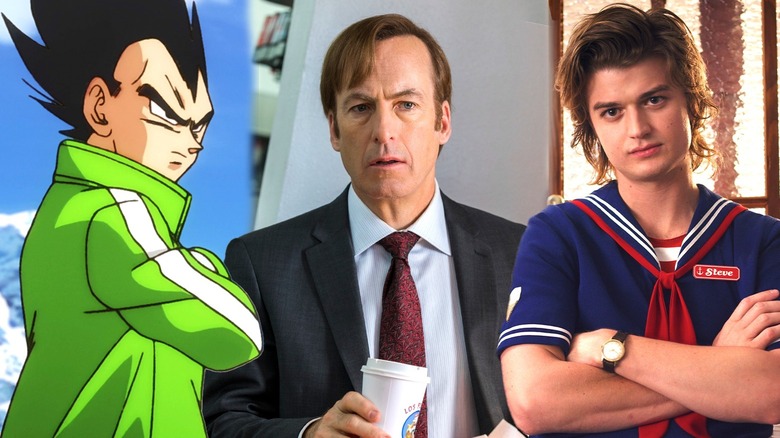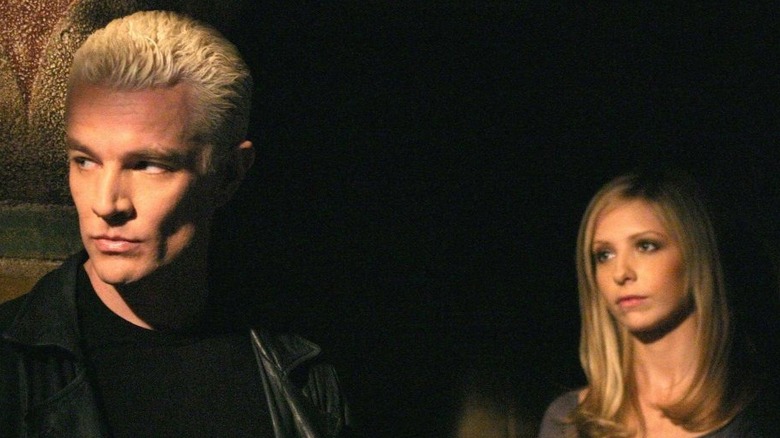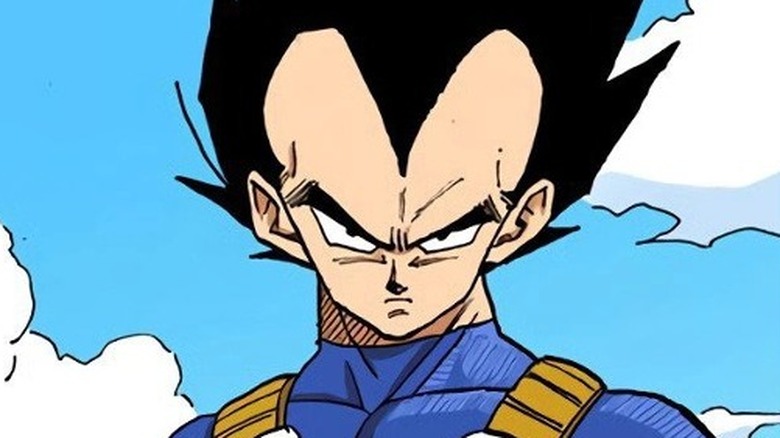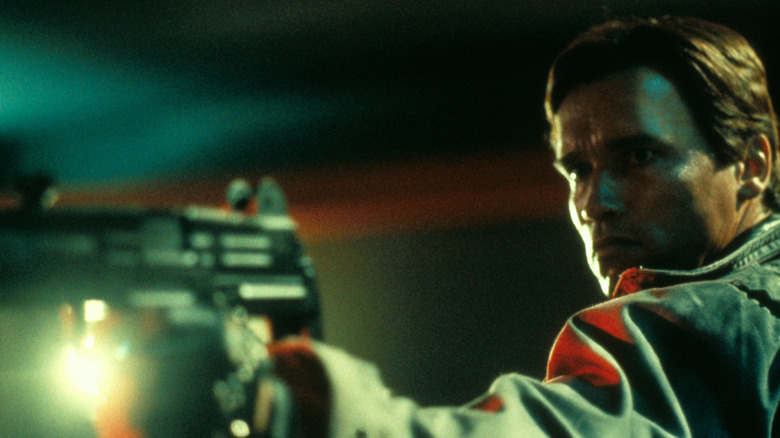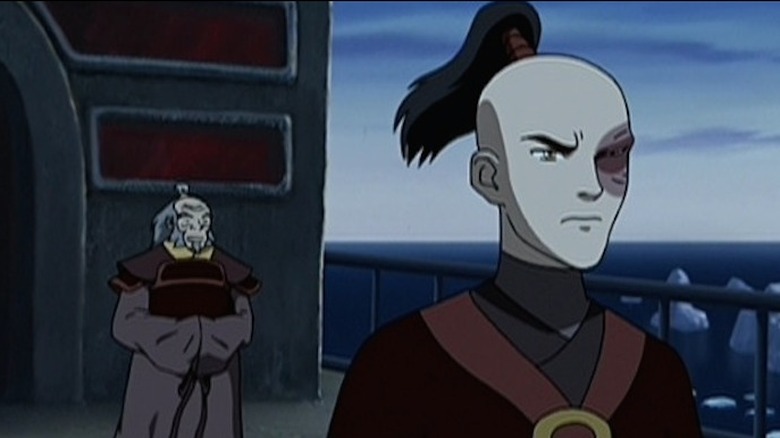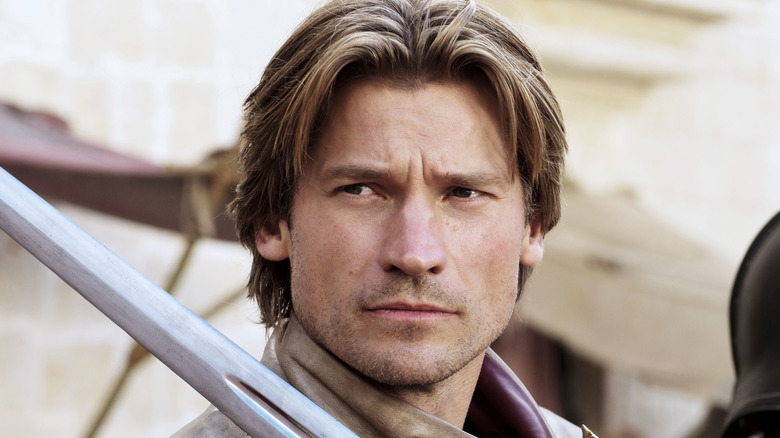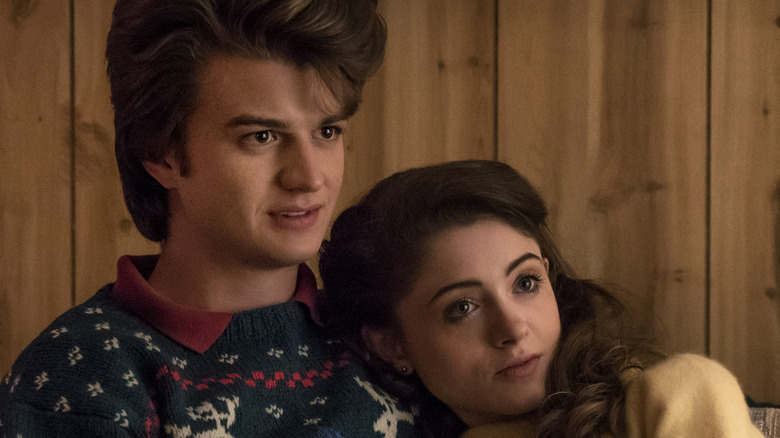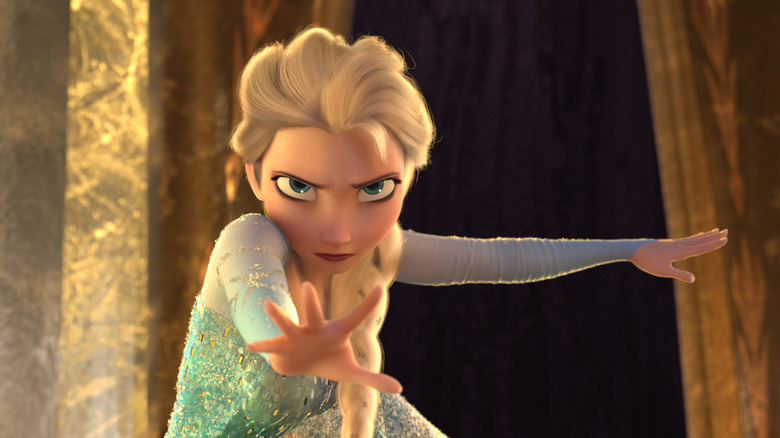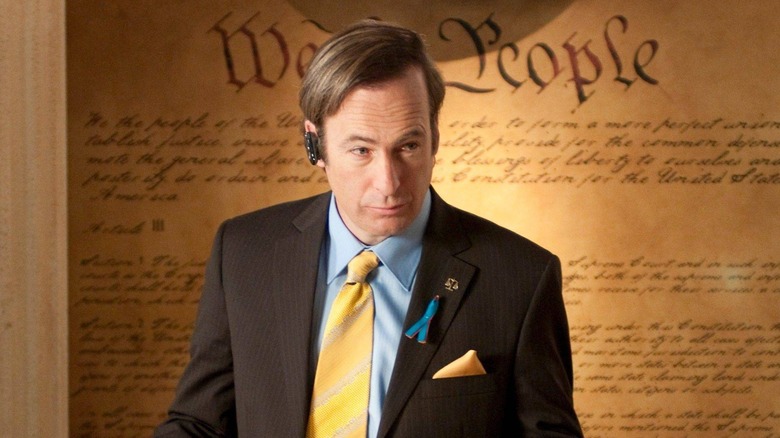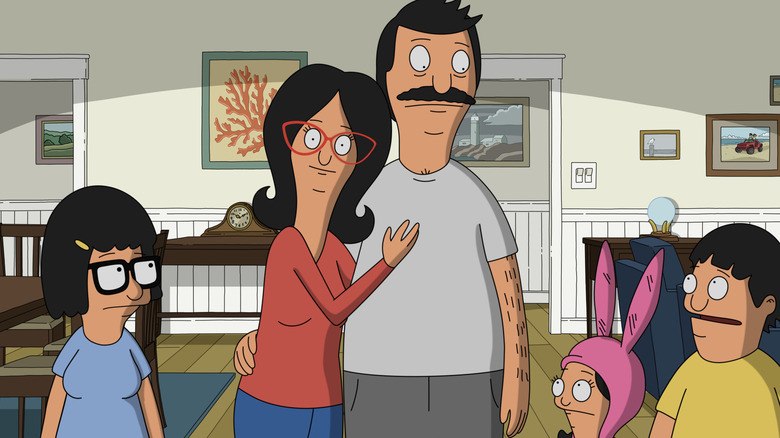Characters Who Were Originally Supposed To Be Villains
While everyone loves watching good guys fight the forces of evil in our movies and television, sometimes it's more interesting to see a villain turn away from their darker nature to become good. Redemption arcs are when morally gray or even outright bad characters change their ways and become better people in the end. These kinds of narratives have been endlessly popular over the years since audiences seem to enjoy watching the transformation from enemy to friend of their favorite complex characters.
These heel turns are sometimes done impulsively by writers looking to shake things up, but the more compelling examples of it are planned ahead. Creators often set up a character as a villain early on only for them to slowly transition them through trials, tribulations, and intense personal growth into being better people. This doesn't necessarily have to change the core of who they are, but instead shifts their loyalties and understanding of the world around them.
In some cases, these characters started as straight-up villains in one appearance but subsequently became heroes in later ones. Other examples follow the slow but steady redemption of a villainous person over the course of several seasons. Either way, these are some of the most popular characters to ever transform from foe to friend. Read on to find out about all the characters who were originally supposed to be villains.
Spike
Considered by many to be the poster child for bad boys turned good, it'd be impossible not to mention Spike from "Buffy the Vampire Slayer" on this list. The character was created by Joss Whedon and starred James Marsters as an edgy vampire who slowly becomes a friend and ally of Buffy Summers (Sarah Michelle Gellar). The show is unsurprisingly centered around vampire slaying, so it should be pretty obvious how a character like Spike was initially intended to be a dangerous enemy to Buffy and her crew.
"Buffy the Vampire Slayer" creator Joss Whedon never intended Spike to be a good character, or even a popular one. It was clear to audiences at the time that this punk rock vampire was intended to be a one-off, disposable bad guy aligned with the evil forces of Angelus. Yet, Spike quickly became so beloved by audiences that it became impossible for the show to kill him off by the end of his Season 2 introduction. During an interview on "Inside of You with Michael Rosenbaum," James Marsters discussed the pushback he received from Whedon regarding his unintentional fanbase. He said, "I came along and I wasn't designed to be a romantic character, but then the audience reacted that way to it. And I remember he backed me up against a wall one day and he was just like, 'I don't care how popular you are, kid, you're dead. You hear me? Dead. Dead!' And I was just like, 'Uh, you know, it's your football, man. OK.'" Regardless, Spike didn't die and instead became a consistent presence on the show as a force of good, including a heroic self-sacrifice by the series end.
Vegeta
Fans of the long-running manga and anime franchise "Dragon Ball" will instantly think of one character when discussing bad guys turned good, and that's Vegeta. "Dragon Ball" is a massive media franchise created by Akira Toriyama in 1984. The story follows the adventures of a hero named Goku who strives to collect all the magical dragon balls, which allow the user to get their wishes granted as a result.
While Goku is the protagonist of the series, he encounters a whole host of colorful enemies who also want to collect dragon balls for their nefarious ends. That's where Vegeta comes in. He was first introduced as a fierce rival of Goku and a member of the powerful alien race known as Saiyans. Originally portrayed as an arrogant, cold, ruthless, and selfish killer who would do anything to gain immortality from collecting the dragon balls, Vegeta was consistently rehabilitated as the series went on to become more of a nuanced antihero. His loyalties to the dark emperor Frieza are tested as Vegeta chooses to join forces with his former rival, Goku, in order to protect the Earth from destruction. One particularly impactful moment in "Dragon Ball Super" forces the formerly evil Saiyan to reject his past actions against innocent people by rejecting to cause further harm by saying, "I have a troubled history with these Namekians. I did them untold harm. So no, I can't allow even one more of them to perish." Vegeta's redemption arc from haughty villain to respectable hero stands out as one of the best in the "Dragon Ball" series, making him one of the most popular characters.
The Terminator
Although the lovable killbot played by Arnold Schwarzenegger is best known for his cheesy one-liners and epic action moments, it's sometimes easy to forget that this character was first envisioned as a borderline horror monster. James Cameron came up with the idea for "The Terminator" all the way back in 1982 when he caught a particularly bad fever while filming on location in Italy for the infamous flop, "Piranha II: The Spawning." It was during the sweat-drenched fever dreams that ensued that Cameron first had the idea of a metallic killer stalking him. During an interview with BFI, he said, "The Terminator came from a dream that I had while I was sick with a fever in a cheap pensione in Rome in 1981. It was the image of a chrome skeleton emerging from a fire. When I woke up, I began sketching on the hotel stationery."
While James Cameron didn't get the chance to make this dream a reality until 1984, he was obsessed with the idea of an evil machine from the future hunting someone down in the present day as a horror movie. Of his intention to make The Terminator a horrifying slasher villain, Cameron spoke honestly about his inspirations during an interview with BFI. He said, "His character owes as much to the relentless killers of the slasher horror genre of the late '70s as to science fiction. There is as much Michael Myers in the character of the T-800 as there is Roy Batty from Blade Runner (1982), or Yul Brynner's killer robot from Westworld (1973)." While Schwarzenegger's Terminator was eventually redeemed in subsequent sequels by showing hacked versions programmed to be nicer, his evil origins are still seen in the original 1984 flick.
Zuko
"Avatar: The Last Airbender" has proven to be one of the most beloved animated series of all time, proving that children's animation can be taken just as seriously as other forms of storytelling. Nickelodeon's mainline series followed the story of Aang and his friends as they traverse across various nations to train him to master all four elements as the Avatar: fire, earth, water, and air.
That's where Prince Zuko comes in. He began as the primary antagonist of the series who was dedicated to hunting down Aang as part of the evil Fire Nation army. Creators Michael Dante DiMartino and Bryan Konietzko told the "Avatar: Braving the Elements" podcast that they first conceived of Zuko as a more tangible enemy for the early seasons. They said, "We had our big Fire Lord, the big, bad boss at the end of the story. Eric was like, 'Yeah, that's cool, but you need some boots on the ground. You need someone who's going after them the whole time." That's when Zuko was born as the spurned child and heir of the monstrous Fire Lord Ozai. They continued by adding, "Wouldn't it be scarier if it was a kid who was really driven?" As the series went on, however, they added nuance to Zuko by having him question his part in the Fire Nation war machine and his father's sins, pushing him towards redemption by eventually joining Aang in his quest.
Jaime Lannister
HBO's "Game of Thrones" was a cultural phenomenon centered around complex characters in a dark fantasy setting. George R.R. Martin's meticulously created world came to us originally from his series "A Song of Ice and Fire," which began with 1996's breakout novel "A Game of Thrones." Despite a controversial ending, the show overall is considered one of the best ever made, with countless amazingly complicated characters like Jon Snow, Daenerys Targaryen, and Ned Stark.
One of the most controversial characters in the entire series is Jaime Lannister, who was intentionally created as a subversion of the stereotypical prince charming tropes in fantasy literature. Fans of the show know that Jaime Lannister started out as a much different character than he became by the final episode, with his behavior being mostly rooted in self-interest, lofty arrogance, and incestuous devotion to his twin sister Cersei. Yet, both the books and show chose to develop Jaime into a more relatable and, eventually, heroic person. During an interview with Rolling Stone, George R.R. Martin discusses his intentions to use Jaime as a case study of redemption arcs in general. He said, "One of the things I wanted to explore with Jaime, and with so many of the characters, is the whole issue of redemption. When can we be redeemed? Is redemption even possible? When do we forgive people? Our society is full of people who have fallen in one way or another. How many good acts make up for a bad act?" He then added, "I don't know the answer, but these are questions worth thinking about. I want there to be a possibility of redemption for us, because we all do terrible things. We should be able to be forgiven. Because if there is no possibility of redemption, what's the answer then?"
Steve Harrington
It may be hard to believe that a character as beloved and cool as Steve Harrington from "Stranger Things" was ever intended to be a true villain, but that's exactly what happened before the show ever made it to air. Netflix's flagship series follows a group of teens in rural Indiana dealing with extradimensional evil during the 1980s. Steve Harrington, played by the charming Joe Keery, was first introduced as an ill-intentioned boyfriend of Nancy Wheeler (played by Natalia Dyer.)
In the show's first season, Steve wasn't exactly the nicest guy in the world; he was pretty antagonistic to the main characters and possessive of Nancy. Apparently, this was even worse in the original script. According to an interview with Joe Keery for GQ, his character went even further in being a bad guy before the story developed further. He said, "When I got the script, Steve was definitely a little harsher. He was having this party—I think it was on a beach, because it originally took place in Montauk, Long Island. And he was a total, total d*ck. He forced himself on Nancy. Way harsher." Keery went on to describe how his input helped change the direction of Steve's character by saying, "In my mind, I think he has qualities that make him sort of a jerk. And aloof. And maybe not the most intelligent guy. But at the end of the day, I think he really does mean well." The Duffer Brothers clearly took this to heart since Steve has continued to grow into a goofy, well-meaning, and heroic fan-favorite character on the series.
Queen Elsa
"Let it go" takes on a whole new meaning once you learn what the original plans for Queen Elsa were in Disney's hit animated film "Frozen." The story we eventually got focuses on the strained relationship between Princess Anna (played by Kristen Bell) and Queen Elsa (played by Idina Menzel) as the latter struggles with her unwieldy ice magic powers. Fans of the film loved the genuine heart behind their relationship, and the film's climax is centered entirely around their reconciliation after Anna sacrifices herself to save her sister.
The original plans for "Frozen" were quite different than how the story eventually played out. "Frozen" is based on a 19th-century fairy tale by Hans Christian Andersen called "The Snow Queen," which had the frost-wielding queen be more of a dastardly villain. This was apparently the intention for Elsa's character early on in the development of "Frozen," according to one interview with producer Peter Del Vecho for EW. He said, "So when we started off, Anna and Elsa were not sisters. They weren't even royal. So Anna was not a princess. Elsa was a self-proclaimed Snow Queen, but she was a villain and pure evil — much more like the Hans Christian Andersen tale. We started out with an evil female villain and an innocent female heroine and the ending involved a big epic battle with snow monsters that Elsa had created as her army." It wasn't until later that they decided it would be more emotionally compelling if the two were sisters who genuinely loved each other, with misunderstanding and miscommunication being what drove them apart.
Saul Goodman
If you're in a bind and don't know what to do, you better call Saul. Albuquerque's No. 1 sleazy lawyer may have gotten a more in-depth treatment once he got his own series, but this iconic character wasn't always meant to be three-dimensional. Bob Odenkirk's famous lawyer character was first introduced towards the end of "Breaking Bad" Season 2 as a corrupt, immoral, and greedy ambulance chaser who quickly goes into criminal business with Walter White's (Bryan Cranston) meth empire.
During an interview with Yahoo, writer Peter Gould touched on the impetus for creating a character like Saul Goodman. He said, "We realized that if Walt and Jesse were going to get further into the business, they would need a guide. They would need a consigliere, as Saul puts it. That was the origin of Saul Goodman. We were thinking, 'Who could they get?' We also thought to ourselves, 'What would be a problem that they would have?' At that point in Season 2, Jesse's friends were out there selling for him, and so we thought, 'What happens if one of these doofuses gets arrested?'" From those humble origins as a comedic relief side character, Saul became a truly fleshed-out antihero through his portrayal in "Better Call Saul."
Belcher Family
"Bob's Burgers" is one of the best animated sitcoms out there. It came from the creative mind of Loren Bouchard and stars the voice acting talent of H. Jon Benjamin, John Roberts, and Kristen Schaal to bring the Belcher family of burger-flippers to life. It may come as a surprise to learn, however, that these characters originally had much darker origins than the show you know and love.
It turns out that the initial pitch for "Bob's Burgers" was pretty similar except for one major change: the Belchers were cannibals. According to an interview with creator Loren Bouchard with The Hollywood Reporter, he thought it would be funny to have this horrific activity going on behind the scenes. He said, "I originally thought the show should be about a family that runs a restaurant who are cannibals. Very early on, [Fox] said, 'Well, do you need the cannibalism?' I had really put it in there because I thought they would want it. I'm coming off of working for Adult Swim, and the darker, more shocking aspect seemed like what you needed in order for an animated idea to cut through the noise." While the cannibal element was dropped for the actual show, it is referenced in the very first episode of "Bob's Burgers" titled "Human Flesh."
